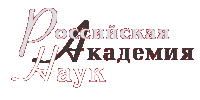

|
Поиск атрибутный
|  |
|

|
 |
General equilibrium model of a transition economy
Аннотация
The welfare theorem states that the market equilibrium delivers maximum to social utility function over production possibility set. In the present paper we discuss whether it is the case in modern Russian economy. We describe dynamic behavior of both demand and supply sides by neoclassical equilibrium approach. The banking system is also taken into account providing such imperfections in financial intermediation as delays of payment. The model obtained has several kinds of self-consistent sustainable stationary equilibria including the one that is very typical for modern Russian economy. This kind of equilibrium is described by high inflation, negative real interest rate, absence of investments and low production level which are really the case in modern Russian economy. We examine Pareto-efficiency of the equilibrium and the impact of high inflation and negative interest rates. The equilibrium turns out to be inefficient but negative interest rates tend to lower the inefficiency although not completely. We also show which agents benefit in this situation when the social welfare suffers.
Ключевые слова
welfare theorem, market equilibrium, social utility function, production possibility set, Russian economy, dynamic behavior, demand sides, supply sides, neoclassical equilibrium approach, banking system, imperfections, financial intermediation, delays of payment, self-consistent sustainable stationary equilibria, inflation, real interest rate, investments, production level, Pareto-efficiency of the equilibrium, agents, social welfare
|
|

